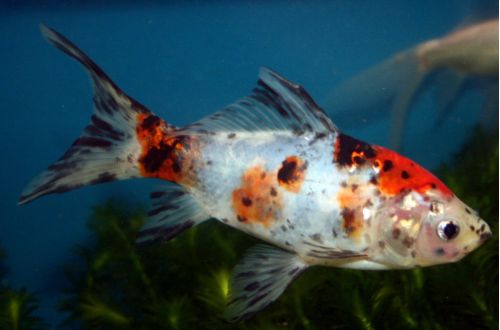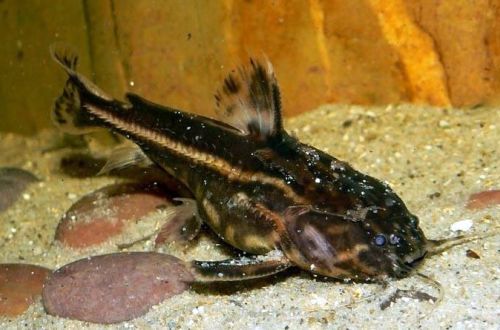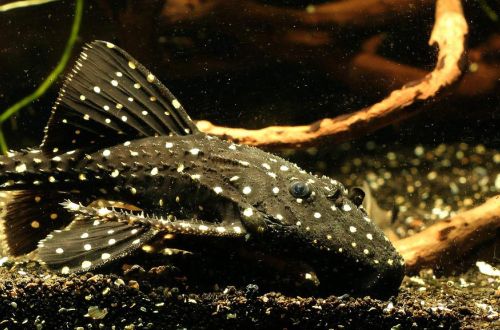
Shubunkin
The Shubunkin Goldfish was bred in Japan in 1892 by breeder Yoshigoro Akiyama by crossing a common Goldfish, a Calico-colored Telescope, and a single-tailed Wakin. In 1900, the new variety received its official name Syubunkin (Jap. 朱文金) – in Russian transcription Shubunkin. In Japan, this is the name of the red brocade from which the kimono is sewn.

The fish has a variegated spotted color, consisting of many spots and specks of various shapes of red, orange, dark chocolate colors. In addition, there are a large number of color variations, including shades of yellow, red, brown, black, purple, gray, white and even blue. The shape of the body repeats the classic Goldfish (or ordinary crucian).
Since the beginning of the 20th century, the fish has rapidly spread among aquarists around the world. One of the first specimens ended up in the USA, where, in the course of further selection, Shubunkin acquired an elongated, pointed forked tail and a more slender body. In the United States it is known as American shubunkin, and in Europe and Asia it is more often supplied as the Calico comet, since according to morphological features it almost completely corresponds to this variety.
If we consider the American Shubunkin as a separate variation, then in addition to it, there are two more generally recognized forms – the Bristol Shubunkin (large tail resembling the letter “B”) and the London Shubunkin (with short fins and tail).
Maintenance and care
From his ancestors, the fish inherited endurance and unpretentiousness in food. The ability to successfully adapt to a wide range of temperatures and values of hydrochemical parameters makes it possible to keep Shubunkin both in home aquariums and in open ponds. Not picky about the choice of design. It gets along well with other peaceful species of comparable size.
Brief information:
- The volume of the aquarium – from 100 liters. for one fish
- Temperature – 10-22°C
- Value pH — 6.0–8.0
- Water hardness – soft to medium hard (5-19 dGH)
- Substrate type – any
- Lighting – moderate
- Brackish water – no
- Water movement is weak
- Fish size – 16-18 cm depending on the size of the tail
- Food – any food
- Temperament – peaceful
- Keeping alone or in a group with peaceful slow-moving fish





